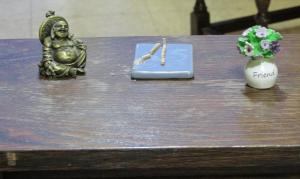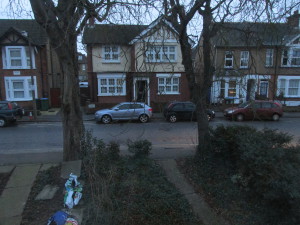Advices and Queries 3: Do you try to set aside times of quiet for openness to the Holy Spirit? All of us need to find a way into silence which allows us to deepen our awareness of the divine and to find the inward source of our strength. Seek to know an inward stillness, even amid the activities of daily life. Do you encourage in yourself and in others a habit of dependence on God’s guidance for each day? Hold yourself and others in the Light, knowing that all are cherished by God.
It has taken me years to find ways into stillness that I actually do on a daily basis. Over time I have found some that work so well for me that I find myself doing them without effort. Others I like, but still take effort. Still others, while appealing, just don’t appear in my regular routine.
As a child I tried earnestly to pray every evening at bedtime – but it never lasted more than two or three days. Though at junior school we did have prayer time in assembly and at the end of the school day plus I went to Sunday school about 50 weeks out of 52. I do remember taking those seriously and enjoying Sunday school.
As a student I tried various things – stopping for a silent grace at meal times was one I managed fairly consistently, even in the public arena of hall of residence dining room (much helped by having other friends who did it too).
So what do I actually do? Quakers, in particular, often talk about setting aside times of quiet but are reluctant to go into detail.
Every morning when I first wake up, often before I fully wake up, I practice Reiki. I do both distant healing and self-treatment. The distant healing gets very mixed with simple intercessory prayer, holding in the Light and metta meditation (because I can’t really tell the difference). I send it to difficult situations in the world and to leaders in those situations (currently leaders in Israel and Palestine, ISIS, the military government in Burma) and to people I know who are ill or having difficulties at present. I sometimes also think of, uphold, send light to, other people or groups of people that I know eg my meeting, my guides, my difficult next door neighbour. Quite often I fall asleep again, but I just continue when I wake up again. It usually takes about half an hour. On completing the self-treatment, which I do second and actually do laying on of hands on the parts of my body that seem to need it, I give thanks for everything and get up.
If I’m at home, I then usually go to the window, look out through a small gap in the curtains (my spouse usually still being asleep) and bow to the new day and to all the beautiful buddhas out there whom I may meet in the course of the day. If I’m in a different place I usually forget this.
At breakfast, I’m usually alone and my habit is to recite the five contemplations. When we take meals together at home (often lunch and almost always the evening meal) we observe a period of silence during which we may just breathe, we may give thanks, we may recall the last supper or other stories. My spouse is very consistent in this particular practice and it is definitely part of our family life.
Now I sound very good, but at this point it peters out rather rapidly! On work days I usually pause on leaving the house and remind myself to walk mindfully. Sometimes I remind myself again part way to work – and sometimes I just forget.. In the last few months I have managed to walk mindfully down the corridor (it’s long, straight, boring, and goes from the area I work in to the staff toilets) most days. I have a few ‘bells of mindfulness’ in the workplace in the form of computer passwords that use key words that remind me to be mindful and some postcards on my desk. By the time I go home for lunch I just go home. I may remember to prepare the vegetables mindfully if it’s my turn to cook, then again, I might not.
That’s the private daily practice, but the shared practice is essential. I go to meeting for worship as often as is reasonably possible. That is every Sunday (unless really prevented) and most Wednesdays. If I’m at Woodbrooke or somewhere else where there are more opportunities (such as Yearly Meeting Gathering) I will take most or all of them (ie early mornings, but not late nights). I also go to Buddhist mornings of mindfulness about monthly and that is becoming part of my core practice. Some days I practice sitting meditation at home, but not as often as I intend to. Though when I do, it requires as much discipline to stop as to find the time. I will also take happily the opportunity to worship or meditate with other groups if suitable opportunities occur.
This sounds like a lot, but I enjoy it, it doesn’t generally feel like an effort.
I also remember the advice, read on a poster on a friend’s wall many years ago: ‘everyone should sit for half an hour a day in silence, unless he is too busy, in which case he should sit for an hour’.
Time set aside for silence, for inward stillness, is time well used and never time wasted.




Pingback: Worship, Prayer and Social Media | Silent Assemblies